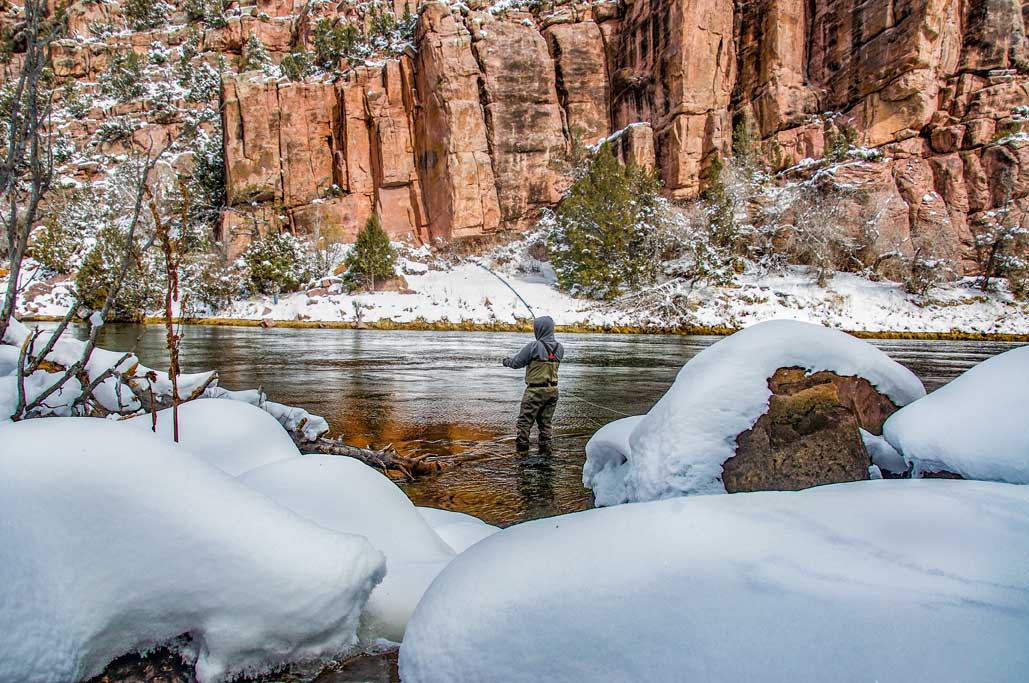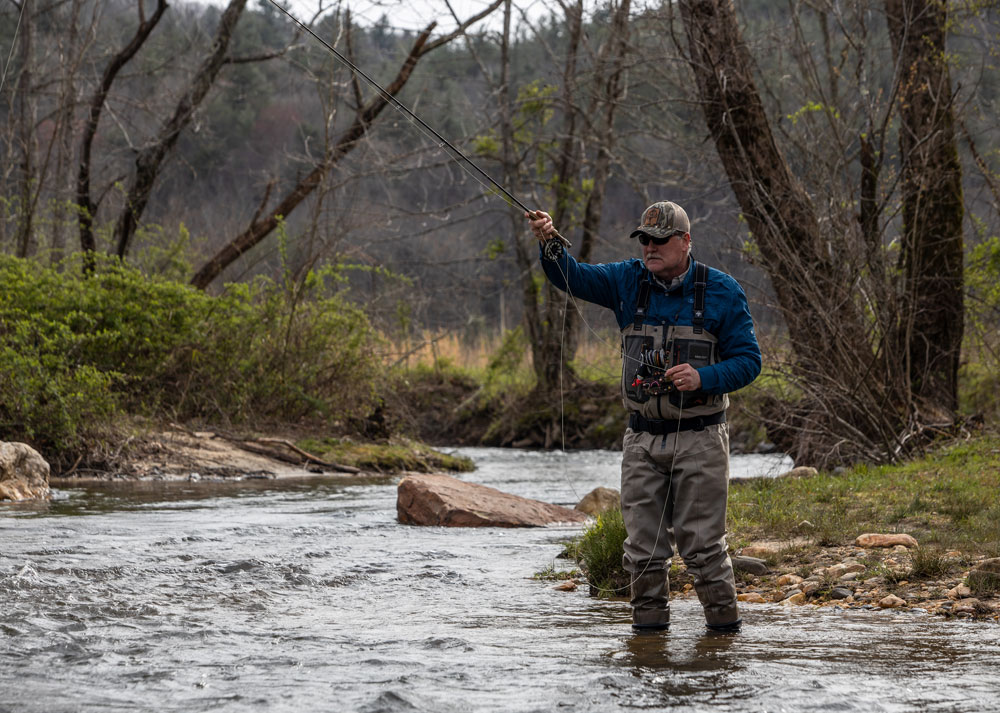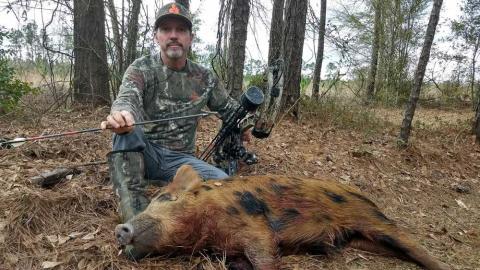When it gets cold outside, many fishermen hang up their waders and move to the recliner. Fishing shows on TV and fishing magazines now fill the void left by the arrival of winter. Oddly enough, many of these TV Shows and magazine articles are about winter fly fishing. The following tips can get fair-weather fly fishermen out of their recliners and fighting winter water trout in no time.

Out of Your Comfort Zone
There is no way around it; winter fly fishing for beginners can be frigid. Once you net the first trout, it doesn’t seem as cold. Old fashioned neoprene waders and two pairs of wool socks can help you stay warm. Fleece clothing is a great choice. A fleece hat with a facemask will keep heat from escaping from your head. Try putting a fleece layer between your legs and waders to keep your legs warm. You can put hand warmers in your socks to keep your feet warm when it’s really cold.
Warm Hands, Warm Heart
Keeping your hands warm will help you fish longer. A foldover mitt with pockets for hand warmers is an excellent investment. You will keep your hands warm, but you can still use your fingers to re-rig. A dehooking tool will allow you to remove the hook while keeping the amount of time you’re handling the fish to a minimum. A dehooking tool really does help keep your hands dry.
Sleep In
The bite is better after the water warms up, so there is no need to brave the frigid mornings. Have a cup of coffee and take your time getting your gear ready. You will have the best surface water action in the mid-afternoon on sunny days. Plan on the best fishing between eleven and three.
How to Find What Fish Are Eating
Know Your Water
Tailwaters provide some of the best winter fishing. The water from the reservoir can be 40 degrees or more. The warmer water is great for trout looking for an easy meal. Even in the winter, tailwaters can be teaming with midges, caddis, stoneflies, scuds and mysis shrimp. These food sources thrive in the warmer tailwaters, even when the air temperature is much colder than the temperature of the water.
A Chilly Hatch
Insects will hatch even on cold water. Winter hatches don’t produce the biggest bugs, so be prepared for the midge hatch with a size 22 Gray Midge or size 20 Griffith’s Gnat. When the weather warms up, the Baetis Mayflies will hatch; this is a great time to use a size 20 Blue-Winged Olive.
It’s All in the Presentation
To fish the clear winter water and to match the hatch, you will have to use small flies. You will want a light tippet for the small flies; a 6X Mirage for trout and 4X Mirage are the most popular. Trout will rarely chase a fly in the cold water. Use a strike indicator with a weighted fly while dead-drift nymphing in the cold water. Dead-drifting is a deadly upstream technique to get your fly in front of the lethargic winter trout.
Breaking Down a Trout Stream
Church Fish
Winter fish tend to congregate in slow deep water. If you’re going to swing a fly for steelhead, a sinking-tip line is best. You will need an aggressive mend at the beginning of your cast to work your fly slow and low. Take your time fishing the slow water. If you’re getting no response, move on. When you do connect, try not to blow the pool up. The congregation may stay for Sunday dinner.
Importance of the Mend
Room Service
During the winter months, trout are waiting for their food to be delivered. They are not going to chase their dinner. Try high-sticking a double-nymph indicator rig close to the bank; this is a very effective technique in the cold winter water. This is a deadly rig to fish shallow tail-outs as well; just remember to fish slow this time of year.
Basics of Nymph Fishing
Less Is More
Every spring it seems like the crowds increase on your favorite trout stream. People are swinging tackle in every direction. If that’s not bad enough, landing a nice trout while tangled in someone else’s line will get you on YouTube. That same stretch of water during the winter is much less crowded. With fewer fishermen to watch for, it is a much more enjoyable time to fish.
Save the Rod
Fishing in winter can be tough on your tackle. Your guides and reel will often freeze up. Take your time and thaw everything out or you can bust the reel’s drag or rip off a guide. Fishing in freezing weather is a good time to use your old fiberglass rod; breaking your backup rig is easier to stomach than trying to replace your expensive graphite rod. Not many know, but graphite rods can become brittle in the extreme cold.
Winter fishing is a great time to hang up the fly rod and try tenkara fly fishing. The tenkara rod does not have a reel or guides; the rod has a flexible tip and the line ties directly to that. There is no reel or guides to freeze up and break. Many beginners love how easy a tenkara rod is to use. The tenkara rod may become your go-to winter rig.

Just Go
You can do the research and buy the gear. Until you experience winter fly fishing, you just don’t know how great it really is. Your recliner, TV and magazines will be there when you get back. It’s time to put these tips to work and take on the challenge of winter fly fishing. You will learn a lot about your winter gear and winter fishing and a lot about yourself.































